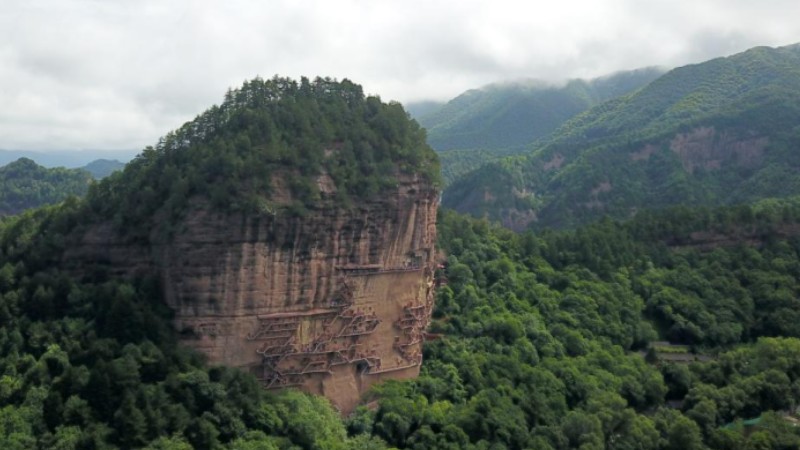Prehistoric site in China's Ningxia turns into tourism goldmine
YINCHUAN, Aug. 2 (Xinhua) -- Zhang Shaoshan found himself endlessly captivated by the enchanting landscapes of Shuidonggou, a prehistoric site nestled in northwest China's Ningxia Hui Autonomous Region, even after numerous visits.
"Shuidonggou gives people a mysterious feeling. Can you imagine what life was like for humans residing here 30,000 years ago?" the 82-year-old painter asked.
"It brings boundless inspiration not only to me but also to many other artists," said Zhang, who visited the site with some 80 other artists from Ningxia recently.
Ningxia, a treasure trove of tourism resources, offers unique attractions like the scenic beauty of the desert meeting the Yellow River and the enigmatic Western Xia Dynasty (1038-1227) culture, among others. It is also China's finest wine-producing region.
Now, tourists have another enticing option of exploring the prehistoric Shuidonggou site.
The site was discovered by a French archaeological team in 1923. It was among the first Paleolithic sites discovered in China.
Scientists have unearthed more than 12 paleolithic sites, over 50,000 stone artifacts, and more than 300 pieces of animal fossils after six excavations in the past century.
This year marks the 100th anniversary of the discovery of the Shuidonggou site, and various kinds of cultural and tourism events have been held to attract tourists since May.
Essay contests themed on research and study, intangible cultural heritage exhibitions and performances, and archaeological and cultural tourism activities will be held in Shuidonggou throughout the year.
At the heart of this site, an expansive museum spanning over 4,300 square meters showcases a diverse array of prehistoric stone tools and fossils. The museum is equipped with advanced acoustic, video and illuminating devices, bringing to life the living environment of early human beings.
During the summer vacation, the museum buzzes with hundreds of tourists and students daily who come here to experience an exhilarating journey of exploration of the prehistoric world.
The Shuidonggou site and the museum receive about 1 million tourists every year.
"Based on the unearthed artifacts, we are confident that this area was once very rich in ecology, teeming with diverse plants and animals," said Gao Xing, a Beijing-based palaeoanthropologist and researcher on ancient vertebrates.
Such abundance allowed Shuidonggou to become a settlement of prehistoric humans. They lived by hunting wild animals and cutting down plants. They even used ostrich shells to create various decorative objects, showing their primitive aesthetic sense, Gao explained.
Photos
Related Stories
- 2023 Int'l Meat Industry Expo kicks off in Yinchuan, NW China
- Desert city morphs into high-end resort in NW China
- Int'l wine conference, expo in Ningxia offer unique platform for wine-making industry
- Int'l wine conference, expo open in China's Ningxia
- Rural veterinarian maintains dual role as vet and internet celebrity in NW China's Ningxia
Copyright © 2023 People's Daily Online. All Rights Reserved.









